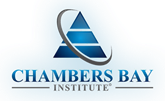
Critical Reading – Vital to a Leader’s Rhythm
by Jim Solomon
“We shouldn’t approach professional reading with a checklist mentality, but instead put forth a more comprehensive effort that goes beyond reading a bunch of books.” – Joe Byerly
Best Leaders are Readers
Is daily reading a part of your rhythm as a leader? If you schedule time for meetings, reviews, networking, and maybe even golf, where does reading fit into your day?
So often the leaders with whom we work regularly share how swamped they are or how fast the pace is today with it only getting faster on the horizon. When asked how they spend their time, the common response is that they spend it in meetings, taking care of things for their team, or something else related to taking care of others. And when asked when they schedule time for themselves, for their time to read – think – plan, for their performance improvement – their reaction is either a blank stare or a hardy laugh.
However, when we look into the “best _______”, you fill in the blank – we find that they are constantly seeking to improve. They want to stay ahead of the pack or at least be competitive with the best of their breed. This might entail various types of studying or watching films of past games or events, professional development or training, and taking time to put ideas into practice.
So, if one is looking to become the best leader, how do they grow and improve without taking their eye off the ball of their day-to-day work?
Highly successful leaders report that a key part of the answer is making reading a daily part of their rhythm.
“Did you know that many of the most successful leaders in business are avid readers. Warren Edward Buffett reads 500 pages a day. Mark Cuban reads 3 hours a day. Bill Gates reads 50 books a year and takes reading vacations where all he does is devour books. While I may not consume books as rapidly as these CEOs, I set aside time every evening to put away electronic devices and relax with a book.“ shares Stephanie Stuckey, CEO Stuckey’s Corp.
According to research by Jim Kwik, “Most CEOs and executives read 4-5 books per month. These are the leaders, the gamechangers, the ones that end up shaking the ground, rebuilding industries, providing jobs, and inventing some of our most beloved everyday products. If they’re reading that much, then clearly there is still some value in picking up a book.”
It’s not the Words, it’s the Take Aways
Schedule your reading time – with too many potential distractors, it just won’t become a habit if you don’t. Make reading a part of your personal operational rhythm by setting goals and holding yourself accountable. Even better if you have others to help with your accountability.
Go beyond just reading, read critically. Because we know what we know, and too often don’t know what we don’t know, by simply reading without a critical approach, we are at risk of restricting our comprehension. One’s goal while reading is to be open to understanding (not necessarily agree with) the author’s perspective.
“Jay Luvaas, former professor of history at the U.S. Army War College, once wrote, “Each man reads his own lesson according to peculiar mind and mood. Thus, our honest attempts at professional development may only reinforce our limited experiences and biases.”
To escape from these limitations, in her approach to critical reading, Tania Patterson includes a regular regimen of thought questions to push beyond the collection of words that make up the book’s content to cause the reader to capture a greater awareness that include:
- consider place and date of publication;
- identify author bias and purpose;
- distinguish between fact and opinion;
- gauge scope of research;
- evaluate evidence;
- compare the author’s argument to other points of view; and
- ultimately, evaluate the strength and validity of an argument with the goal of writing a critical review of the article.
Joe Byerly, From The Green Notebook, and expert on professional reading programs, takes Tania’s approach a step further to garner a leader’s time invested in reading. He suggests to “write, connect, and share.” His strong following validates this approach, reporting that their retention of material read, ability to use content within the workplace or to further their careers, or to assist or mentor others all become stronger by reading critically. Joes suggests that as a reader, include these to turn a passive approach of reading into an actionable one:
“Write. Take notes while you read, and write down any key passages, insights, and reflections. Putting my thoughts on paper helps me achieve clarity and gives me a chance to better formulate new ideas.
Connect. Connect with mentors, peers, or subordinates who will motivate you to read and drive you to think critically about the subjects you come across. These connections are critical to strengthening our own self development. Our professional networks can have a tremendous impact on not only what we read but can assist us when we struggle to understand new concepts and higher-level material.
Share. Share our ideas with others. As we tackle books, articles, or subjects, we should talk about them with peers, subordinates, and mentors, all of whom offer vastly different perspectives that can help broaden our own. Writing for publication is also a means of sharing. Almost every time I publish a blog post or article I get feedback, and that feedback lets me know if I’m on the right track or if my ideas need further development.”
The 45-Day Critical Reading Challenge
For those who are skeptical of taking on reading as a regular part of their leadership rhythm, it is suggested that you pilot a critical reading program for a minimum of 45 days with the goal of completing at least 1 book. Schedule at least 20 minutes each day for reading with a set number of pages. Make at least two of your weekly reading times during your workday.
Keep a reading log to record date, amount of time spent on reading, number of pages read, and key take aways from the pages read. Record at least 3 questions that you want to ponder, research, or ask others about. Document who you shared your reading experience with, and any notable thoughts or insights gathered from this engagement.
Don’t miss a day of reading during this pilot period. Hold yourself accountable to make it zero tolerance for missed days. At the end of the 45-days, fairly critique this opportunity to determine its benefits and challenges. Could you modify this reading rhythm to make it more impactful? Ask yourself about the outcomes from this reading experience.
Integrator Leader Reflections
- If your goal is to continue to grow as a leader, whether you are a seasoned C-suite executive or an emerging one, how have you incorporated reading as an actionable part of your personal growth?
- With the understanding that the pace of work will only increase, that your demands both professionally and personally will grow, and time is one of your most precious resources, how are you using regular reading to break from this cycle to better yourself, your team, and ultimately, your organization?
- If you desire to be a top leader in your field, a true gamechanger, how have you included reading as a part of your leader rhythm?

|
You must be logged in to post a comment.